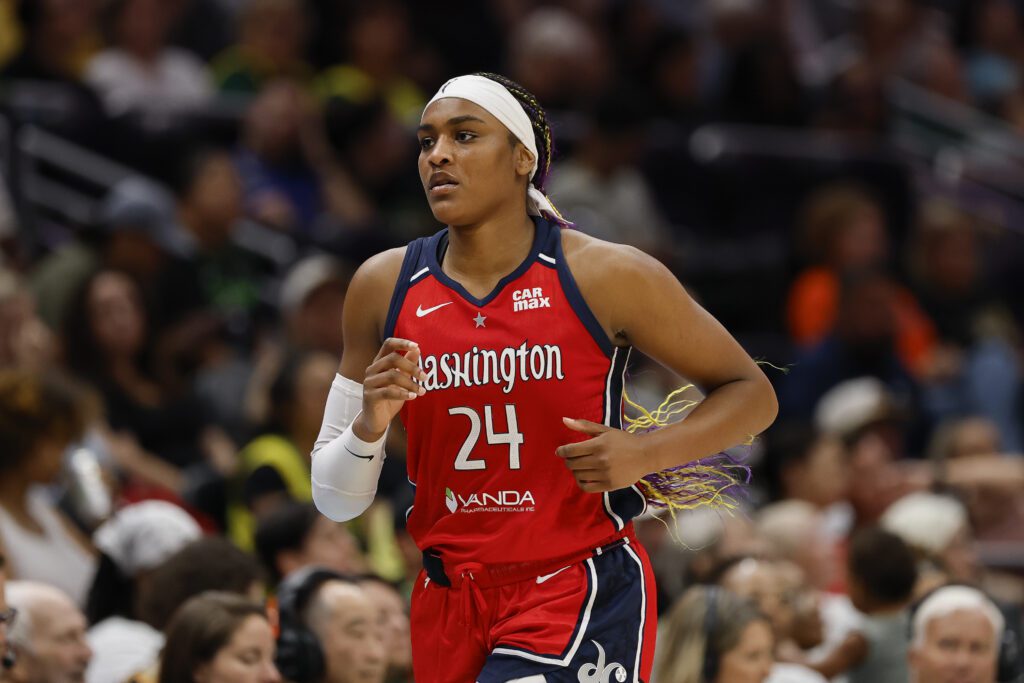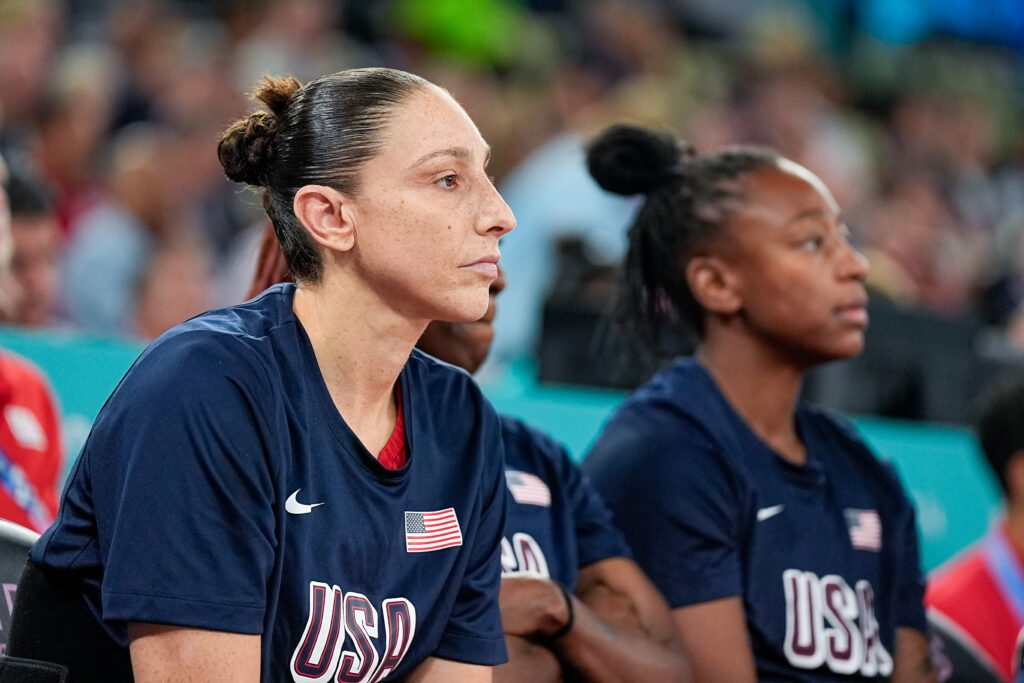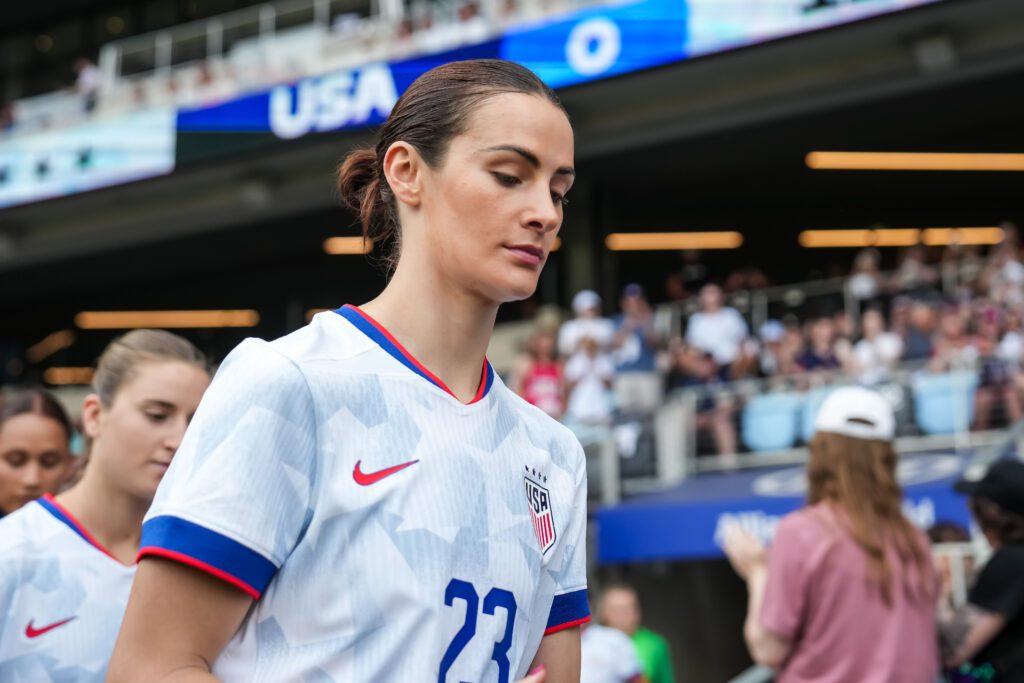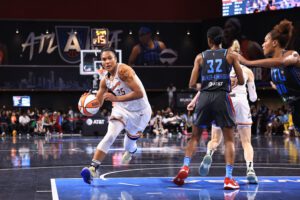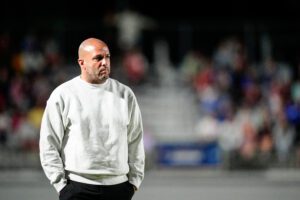South Dakota State and South Dakota have met in the championship game of the Summit League tournament three times since Myah Selland and Chloe Lamb arrived on their respective campuses in 2017. Of the three championship meetings, Selland’s Jackrabbits have claimed two tournament titles, Lamb’s Coyotes one. The only year that the two seniors did not meet in the finals was 2021, when South Dakota State, playing without an injured Selling, bowed out in the first round and Lamb and South Dakota claimed the title to even the four-year score at two apiece.
Yet for the two in-state seniors, it goes even deeper. They faced off twice in high school, and in the final game of their prep careers, Lamb’s Sully Buttes High School team topped Selland and Sanborn Central, 63-48, in the South Dakota Class B state championship game.
“We lost in that game, but it was one of those really cool environments, and Chloe has gone on to have a really good career at USD,” says Selland. “She had the opportunity to stay home and represent South Dakota, too. For the two of us to play in the smallest class and in the Class B South Dakota state tournament together, I think it’s really cool for small town kids and South Dakota kids.”
Selland’s graduated in a class of 12 students, Lamb in a “really big” class of 25.
“Her [Selland] and I kind of had similar stories,” Lamb adds. “We were both going off to play college basketball in-state, staying home and repping our home states, but she was a handful for sure. That was our main focus defensively. We knew we were doing to have to limit her, and I say limit because there was no way we were going to stop her.”
That championship game was a preview of what was to come over the next four years.

Selland has scored over 1,000 points in a Jackrabbit uniform and was named the 2020-2021 Summit League Player of the Year. Lamb enters the 2021-2022 season with over 1,300 points and was named to the All Summit League first team a season ago while also collecting the league’s tournament MVP award. The two are only the latest in a long line of in-state stars who vaulted both programs into the national conversation and turned the mid-major Summit League into a consistent two-bid representative in the NCAA Tournament.
In just their fifth season as a Division I program, with a roster that included six South Dakota natives, Coach Aaron Johnston guided the 2008-2009 Jackrabbits to a 32-3 record and a first round NCAA tournament victory. Johnston’s 2018-2019 Sweet Sixteen roster also carried six in-state players, including future WNBA draftee Macy Miller, who hails from Mitchell.
Down in Vermillion, Dawn Plitzuweit coached the Coyotes to a 30-2 record and top-25 finish during the pandemic-shortened 2019-2020 season with three homegrown kids, including Lamb and Summit League Player of the Year Ciara Duffy, a Rapid City native. Both teams have four South Dakota players on their 2021-2022 rosters — an impressive Division I track record for a state of less than a million people.
“I think people are always surprised about how talented these young women from the state of South Dakota are, because I think when they see us have success, they always think that ‘Well, they are probably doing it with overachieving players and just kind of found a little lightning in a bottle,’” says Johnston, who is entering his 22nd season as head coach of the Jackrabbits. “In reality, some of the players that come from the state of South Dakota could play at most of the Division I schools out there.”
Both Johnston and Plitzuweit cite versatility as a byproduct of the small town upbringing of many of their players. A 6’0 collegiate guard might be the tallest girl in her hometown, and thus be expected to play in the post — or at the net. Both Selland and Lamb also played volleyball and ran track for their high schools.
“A lot of the schools here are limited in how many girls are in the school, so the girls are competing in volleyball or cross country or soccer, and then basketball and then track, so they’re well-rounded athletes,” says Plitzuweit, who took over at USD in 2016. “They are exposed to a lot of different types of coaching and experiences. I think one of the things is that they are very competitive young ladies.”
The state of South Dakota has a deep appreciation for girls’ basketball, says Selland. You can see it in the well-supported youth leagues, in the packed high school gyms on Friday nights, and in Frost Arena and Sanford Coyote Sports Center on Saturday afternoons each winter.
But nowhere is the fervor more evident than the annual Summit League Tournament, held annually in Sioux Falls. While the regular season matchups between USD and SDSU are usually the highest-drawing home games for both teams, the 2018, 2019, and 2020 Summit Tournament championship game matchups pulled 8,704, 7,871, and 7,833 fans, respectively. It is not uncommon for the arena to be full 30 minutes before tipoff. Back when the two teams squared off in the obscurity of the Division II hinterlands, Johnston saw everything from carrots to a dead coyote head to dead jackrabbits thrown on the floor.
“Some of these things sound over the top, and they are, and for the betterment of the game those things have kind of gone away, but that speaks towards that intensity,” says Johnston.
Now that the rivalry has moved out of the shadows and onto the Division I mainstage, the rest of the country has taken note. South Dakota State hosted top-25 programs Iowa State and Gonzaga in Brookings last season, and Kansas State will make the trip this year. Dawn Staley’s South Carolina Gamecocks and Jennie Baranczyk’s Oklahoma Sooners will both make the trek to the Mount Rushmore State this month to play USD.
“It certainly is a great opportunity for basketball in our region to continue to grow,” says Plitzuweit of bringing top programs to South Dakota. “When we are fortunate enough to bring in teams like Oklahoma and South Carolina the first week of the season, to be playing teams at that caliber… to have those type of teams coming here gives young girls in this region an opportunity to continue to learn about our sport and continue to build that excitement around women’s basketball.”
Lamb says that the increased visibility of the two programs will only strengthen the in-state recruiting pipeline.
“We don’t have a professional sports team here, so it’s kind of like Division I basketball is the closest you’re going to get,” she says. “The success that we’ve had, the national recognition that each team has had, people follow that. As a young girl, seeing that on TV, or seeing a poster or something and seeing girls who are just like you get that kind of recognition and those experiences, that’s something you seek after, too.”
The state’s symbiotic system of allegiance keeps the oft frozen plains a fertile ground for hoops talent: the small communities support their young athletes, who in turn want to stay home to play in front of those who helped them along.
“There are players who are on our roster or who have played here in the past that could have gone anywhere to play, they really could have, they’re that talented, but what keeps them here is that sense of connection to people: family, community, people that they grew up with, aunts and uncles, and wanting to represent all of them on a national stage,” says Johnston.
“I really feel like that connection and relationship piece is really important and certainly something we’ve tried to build with our program and also helps us attract the next group of really good South Dakota players.”


